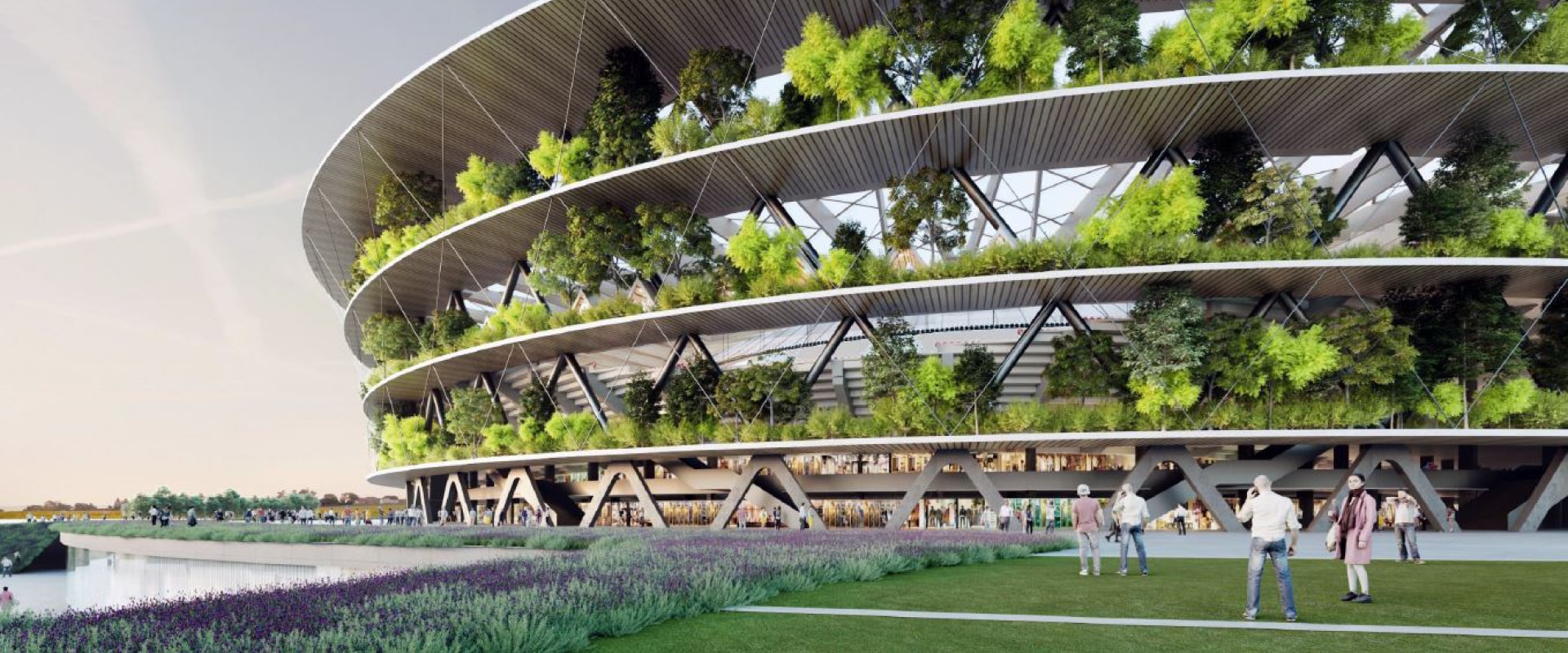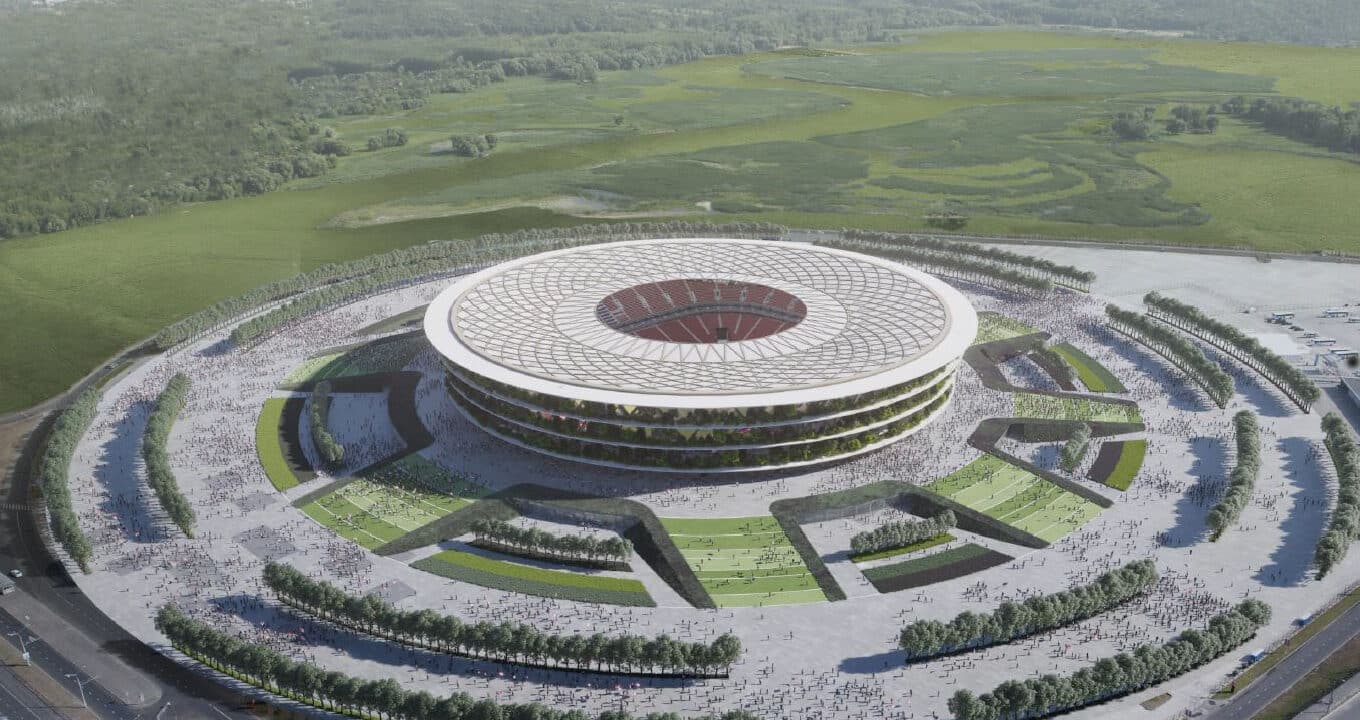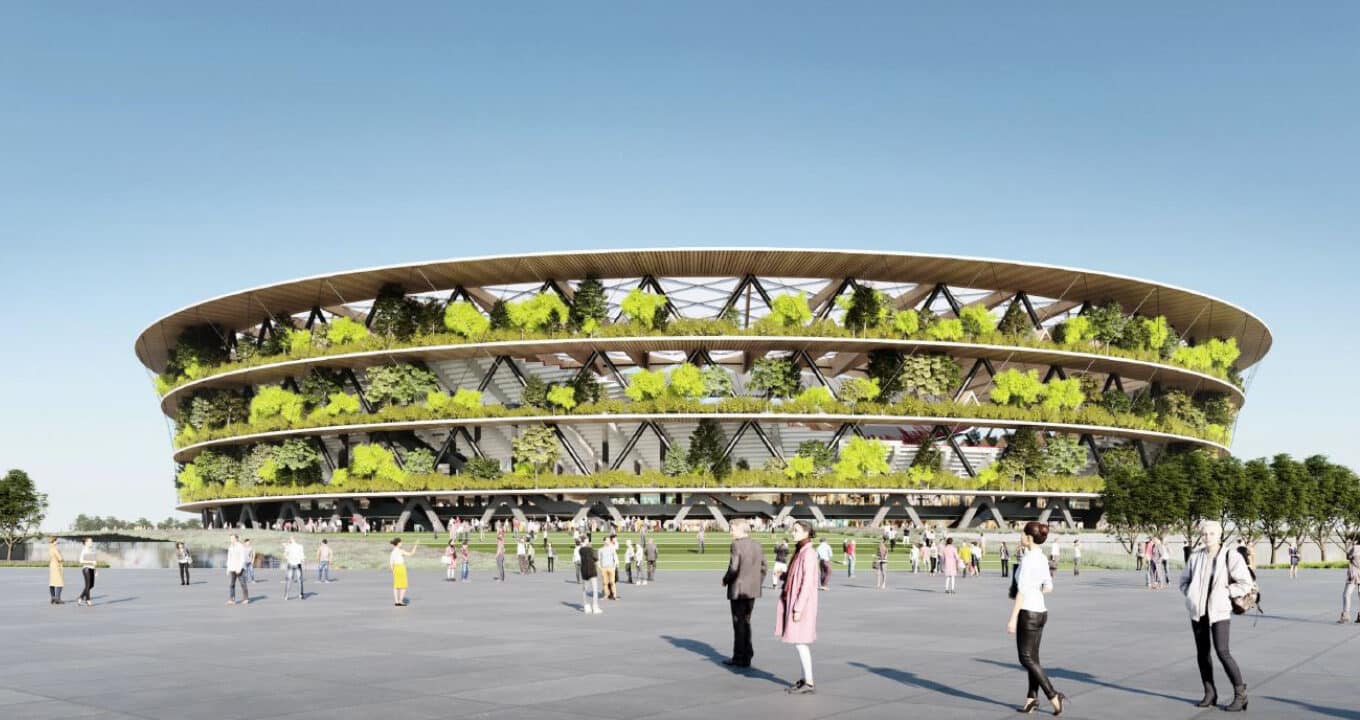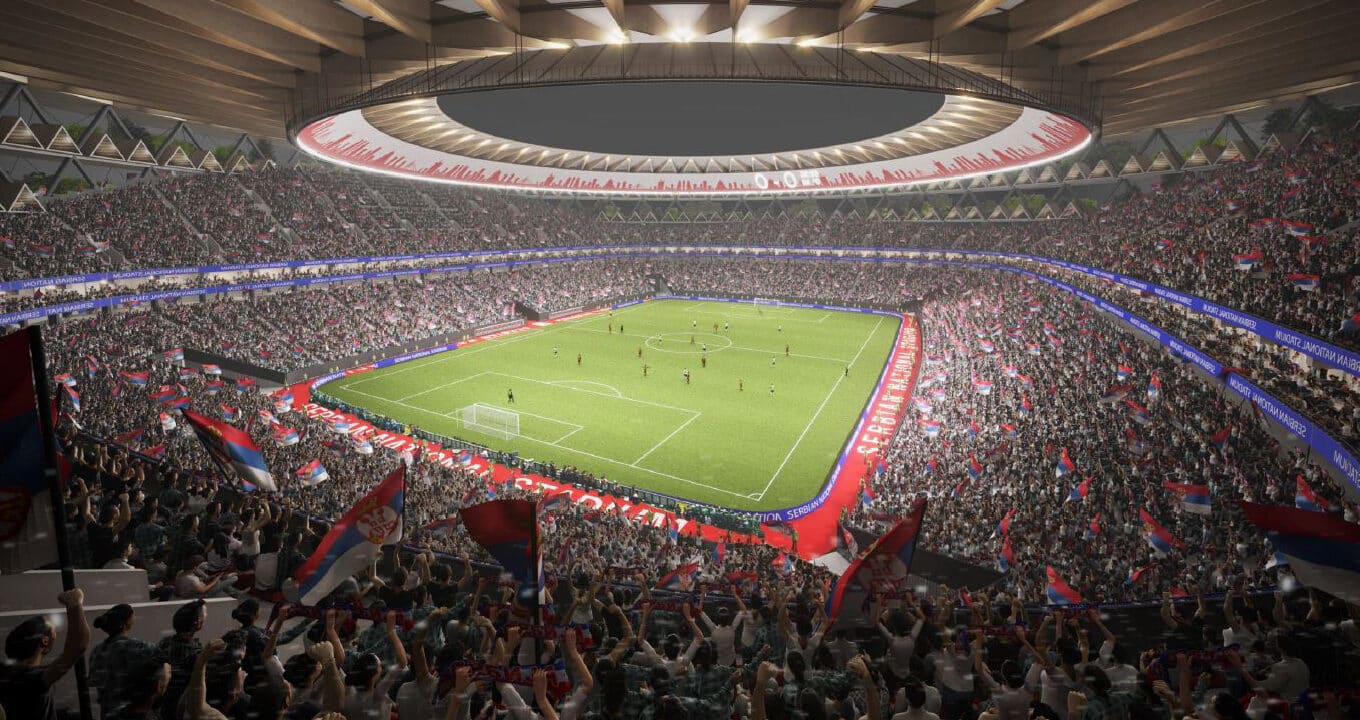The Vision
Despite climbing 20 places in the FIFA Rankings since 2016, Serbia is currently without a true national stadium – the national football team play most of their home matches at Red Star’s Rajko Mitić Stadium in Belgrade.
We are working with Fenwick Iribarren Architects on a new, ambitious stadium design that will change the game for Serbia and its national team, while delivering a sustainable and economically viable national stadium for its people. The unique design of the stadium has been developed using four “rings” suspended by cables and features landscaped concourses that bring nature and sustainability directly into the action.
Built in the town of Surcin, 14km outside Belgrade, the National Stadium of Serbia will have a capacity of 52,000 seats, making it the largest in the country.







